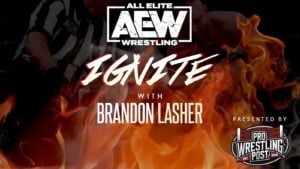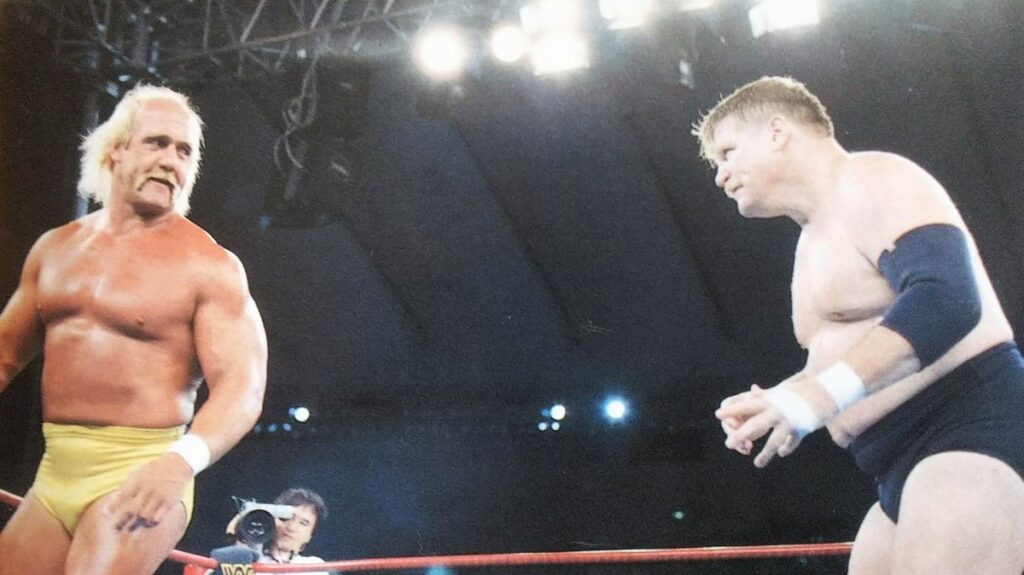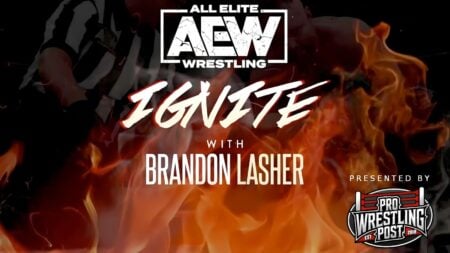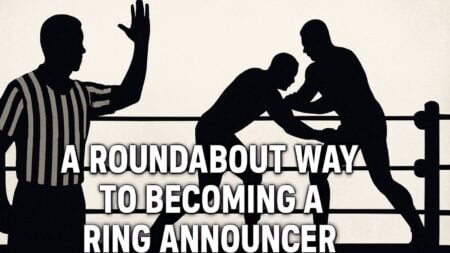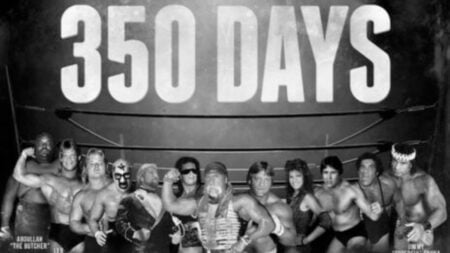On April 13th, 1990, the Wrestling Summit event took place. The event was a co-produced and written event between the WWE, All Japan Pro Wrestling, and New Japan Pro Wrestling. The WWE and NJPW had worked together throughout the 1970s and 1980s together. It was also the only time these three promotions collaborated on a single show. Unfortunately, while there was a reported 53,700 plus in attendance, the video of the entire event is not available.
It was later confirmed that the event in actually had 43,000 paid in attendance. At the same time, the remaining 10,000 plus tickets went unpaid. There have been many different matches that took place from the show that are not available. Certain matches are available on various collections that the WWE produced. But not even those appear on their streaming service as of this writing.
Throughout the 1970s, the WWF (at the time) and New Japan Pro Wrestling had many of their talents compete on the opposing promotion’s shows. WWF talent would appear and compete on NJPW shows in Japan. In turn, New Japan talent would compete in the United States. Their working agreement even included at the time where New Japan booker Hisashi Shinma as their ‘President’ (on-screen).
The relationship between the two promotions even included a memorable night. It would be when then NJPW founder Antonio Inoki defeated then WWF champion Bob Backlund in 1979. The results were later overturned less than a week later.

The Wrestling Summit
The NJPW/WWF working relationship also allowed for New Japan to take ownership of the WWF World Martial Arts Heavyweight Championship. It was title to which they had initially created. Also, the WWF gave NJPW control of the then WWF International Tag Team Championship in the mid-1980s.
However, by January 1990, Vince McMahon appeared in Korakuen Hall in Tokyo, Japan, at an All Japan Pro Wrestling show. At that show, McMahon and AJPW owner Giant Baba shook hands. This came after they had announced they had come to an agreement on a collaborative show. The show was set to take place on April 13th, 1990. It was a show that would also include New Japan Pro Wrestling.
The Wrestling Summit would consist of twelve matches. Some of them involved existing feuds and storylines, while others did not. It was announced that then WWF Champion Hulk Hogan would face one of the top stars in All Japan Pro Wrestling. Terry ‘Bam Bam’ Gordy would take on Hogan in the main event. However, Terry Gordy was later replaced for reasons not fully disclosed (and up for debate). Hogan would face former rival Stan ‘The Lariat’ Hansen in the main event match against Hulk Hogan.
By the time of the event, Hulk Hogan had lost the WWF Championship to the Ultimate Warrior. This was a meer two weeks prior to the Wrestling Summit event. This event would showcase The Ultimate Warrior’s first highly publicized title defense as he would defend the title against the Millon Dollar Man Ted DiBiase. Much like the Warrior did two weeks prior, the new WWF Tag Team Champions, Demolition, would be competing as well.

Legends United
While their titles were not on the line, Ax and Smash did have the honor of facing the legendary Giant Baba and Andre The Giant. Interestingly enough, the tag match was considered the semi-main event while the WWF Championship match was not.
Even the initially slated booking of the event had changed as well. New Japan Pro Wrestling’s Yoshiaki Yatsu was initially slated to team with Puroseu Ace, Jumbo Tsuruta. But Yatsu was replaced with King Haku (Meng) due to an injury suffered prior to the event. They would face the team of Rick Martel & Mr. Perfect. The card change also saw another change as the legendary Jushin Thunder Liger would replace Naoki Sano on the following show.
The Wrestling Summit –
The Night WWF, NJPW, and AJPW Worked Together
Of the twelve matches listed, it was the Bret Hart vs Tiger Mask match-up (that appears on the Bret Hart Documentary), that was the longest of the show. The two men competed to a 20-minute draw. But, as it is been retold, the time expired as Mask was in the midst of pinning Bret Hart.
On the Bret ‘Hitman’ Hart: Dungeon Collection DVD, Bret discussed how he had loved facing Tiger Mask earlier in his career. In facing Tiger Mask II it was a reminder of that initial meeting. Mitsuhara Misawa took on the role of Tiger Mask II and was whom faced Bret during the Wrestling Summit. Despite it not being the same as his encounter with the previous Tiger Mask, he points out that those were enormous shoes for Misawa to have to fill at the time.
Interestingly enough, it would be the WWF Championship match between the Ultimate Warrior and Ted DiBiase that would be the shortest match of the evening coming. It came in at just over six minutes in length.
The show had a mix of WWE exclusive bouts, AJPW exclusive bouts, and NJPW exclusive bouts. And matches one’s in which talent from all promotions were intertwined with one another. For example, in matches such as ones already mentioned the likes of Jimmy Snuka & Tito Santana would face Kenta Kobashi & Masa Fuchi. Or a New Japan Pro Wrestling exclusive, when Masa Saito and Shinya Hashimoto defended their titles against Riki Choshu and Masahiro Chono for the IWGP Tag Team Championships.
There wasn’t continuity with one of the characters’ roles in one WWF exclusive match as they were in the United States. This would be evident with the Big Boss Man who would compete as a face at the time in the United States but in his match against Jake ‘The Snake’ Roberts, he was a heel.

Randy Savage and Genichiro Tenryu – The Match We Never Knew We Needed
While not all twelve matches for this show are available there were five matches available online as seen below. Of the five available, the most intriguing of them included the great Macho King (at the time) Randy Savage as he faced the legendary Genichiro Tenryu. Their match went just over ten minutes. From the onset of the appearance of Savage and Queen Sherri, Randy Savage was already in full-on mode. It was evident right away that the Savage and Sherri dynamic was going to be turned up to ten for this Japanese crowd.

Savage would approach Tenryu appearing to provoke him. He would test him with all the arrogance and bravado that the Macho King could muster before the match. It was clear he wanted to present himself as bigger than he was for the silent assassin in Tenryu. As soon as the match began, Savage hits the ropes and Tenryu sat back in the corner. He calmly would take it all in as to what he is witnessing with the Macho Man. Early on in their match, Savage had the advantage. However, as time passed, Tenryu would hit Savage with a series of knife-edge chops much to the crowd’s delight.
The furious barrage of chops ignited the crowd. It also led to a fired-up Tenryu, showed the intensity that many had been so accustomed to seeing. Savage would seek refuge in the corner as Sherri attempted to show her support. She would then get onto the apron causing a distraction in the process. As time passed and the match drew to a close, Tenryu hit an enziguri on Savage, followed by a powerbomb for the pinfall and the win. Those in attendance were pleased by the result.
The Wrestling Summit – A First Time Collaboration
Not only was this the only show these three promotions collaborated on, but the WWF would also no longer work directly with AJPW or NJPW after this. The two Japanese promotions were often rivals and the WWE would form a new working relationship with another promotion. In fact, a new promotion at the time, Super World of Sports would work with the WWE.
Talent would be exchanged between the two promotions. Koji Kitao & Genchiro Tenryu who worked the Wrestling Summit shows would also compete at WrestleMania VII for the WWF. Tenryu and Savage’s match was so highly regarded that their feud would carry on during the Super World of Sports shows. Tenryu and Savage’s feud ended at WrestleDream in 1991 when Genichiro Tenryu defeated Savage.
The show itself was fairly well regarded by critics earning the Best Major Wrestling Show by the Wrestling Observer Newsletter Awards. While it wasn’t without its challenges the show as a whole was considered a success. A collaboration of this magnitude was sure to have some obstacles along the way. From a collaborative main event that saw a notable gaijin in Stan Hansen battle the face of the industry at the time in Hulk Hogan, it appeared as though it went relatively well.
While the buzz words ‘forbidden door’ are often used in contemporary wrestling, in 1990, three promotions came together for the first time. They created something special and unique. It would be a few years before NJPW would work on another major collaborative event with an American-based company in WCW. But that is a story and a collision in Korea for another day.
